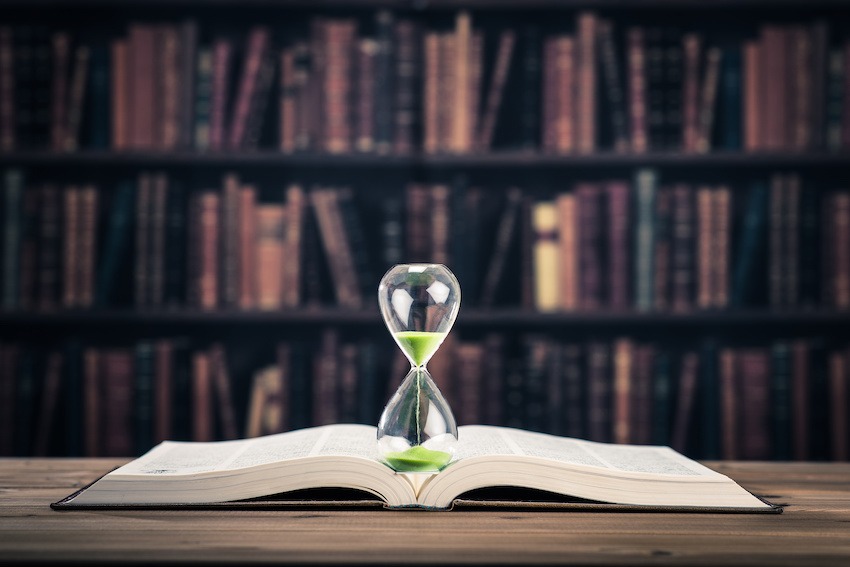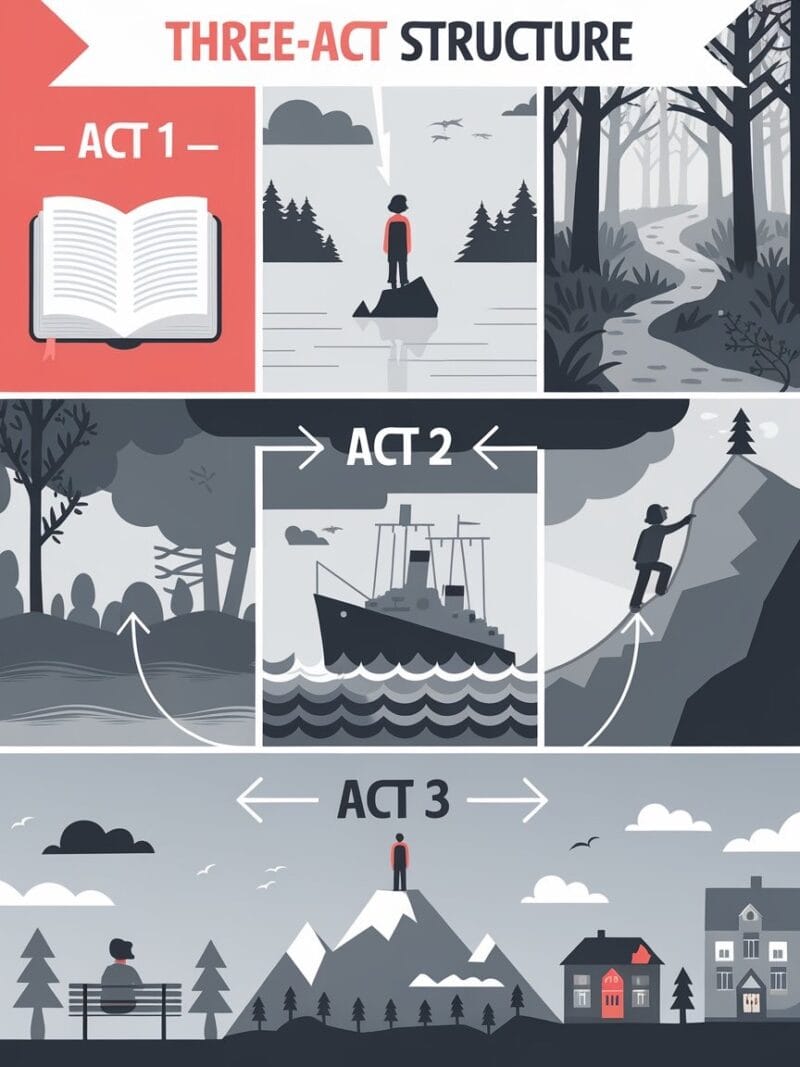The use of foreshadowing in a story is a powerful literary device used by authors to hint at or suggest future events in the unfolding narrative.
In literature, it serves as a subtle technique to add depth and anticipation to the narrative, engaging readers and keeping them invested in the plot.
Foreshadowing can be presented through various means, such as dialogue, imagery, symbols, or even specific events that allude to future developments.
By understanding the use of foreshadowing in a story, readers can fully appreciate the artistry behind the subtle clues that lead to dramatic revelations at the end of the story.
In this article, we delve into the definition of foreshadowing, explore its importance in literature, and analyze various examples that showcase its effectiveness.
Understanding the Purpose and Benefits of Foreshadowing
At its core, foreshadowing is a strategy used by authors to discreetly prepare their readers for what lies ahead. The use of foreshadowing not only adds an element of surprise but also enhances the overall impact of key plot points. Authors generate tension and a sense of foreboding by intentionally putting clues and hints throughout the narrative, encouraging deeper interaction with the story.

Moreover, foreshadowing helps maintain a sense of continuity throughout the story. It provides a thread that connects different elements, making it feel cohesive and well-crafted.
By strategically placing hints and suggestions along the way, authors can create a seamless flow from one event to another. This approach helps the audience connect seemingly unrelated events or details, leading to a deeper understanding of the story’s themes and character motivations.
By planting seeds of information early on, authors can guide readers towards important plot points or character developments, making the eventual revelations more satisfying and impactful.
Furthermore, foreshadowing contributes to the development of narrative depth by adding layers of complexity, nuance, and richness to the storytelling process. It rewards attentive readers with a sense of fulfillment once the foreshadowed events finally take place.
Types of Foreshadowing in Literature
Direct foreshadowing is perhaps the most straightforward technique, where an author explicitly hints at future events or outcomes. This can be done through explicit statements or dialogue that directly refer to what is to come.
On the other hand, indirect foreshadowing in a story involves more subtle hints and clues that require readers to make connections and draw conclusions on their own.
Direct Foreshadowing: Building Anticipation Through Clear Clues
Direct foreshadowing leaves little room for interpretation as it explicitly states or predicts future events. This type of foreshadowing is more straightforward and can be seen in statements made by characters or narration that directly allude to what will happen later on.
By employing direct foreshadowing, authors create an immersive reading experience where readers become active participants in uncovering the story’s secrets. With explicit hints and clues about future events, readers are kept engaged and eager to turn the pages.
Indirect Foreshadowing: Creating Suspense through Subtle Clues and Imagery
Indirect foreshadowing requires readers to read between the lines and infer potential outcomes based on subtle hints scattered throughout the text. It makes readers more involved in the story as they put together hints to guess what might happen in the next part.
Indirect foreshadowing requires readers to pay close attention and make connections between seemingly unrelated events or details. It allows for a more nuanced reading experience where readers can piece together the puzzle on their own.
How do you identify foreshadowing? Remember that foreshadowing can vary in subtlety. Some instances are more obvious and deliberate, while others may require careful reading and analysis.
Techniques for Using Foreshadowing Effectively
Foreshadowing is commonly used for dramatic irony, where the reader knows something that the characters do not. This creates tension and suspense as we watch the characters unknowingly walk into situations with potentially dire consequences.
In this section, we’ll explore practical methods for making the most of foreshadowing. We’ll discuss how the use of foreshadowing in a story strategically enhances characters and plot lines and keeps readers engaged and intrigued.
Foreshadowing through Characterization: A Glimpse into the Culprit’s Motives and Personality
Character-driven foreshadowing relies on the actions, behaviors, or traits of certain characters as indicators of what may unfold later in the story. By establishing patterns or revealing character flaws, authors can hint at potential conflicts or plot developments.
Villainous traits can be introduced through the use of specific language choices, physical descriptions, or even interactions with other characters. These traits may include manipulative tendencies, a lack of empathy, or an insatiable thirst for power. By incorporating these characteristics into the narrative early on, authors set the stage for future revelations and plot twists.
Suspicious behavior is another effective tool for character foreshadowing. The culprit may engage in actions that raise eyebrows or cause doubt among other characters. These behaviors may seem unrelated to the main plot but serve as breadcrumbs for astute readers to follow. As these suspicious actions accumulate throughout the story, readers begin to question the true intentions of this character.
Symbolic Foreshadowing: Objects and Events that Hint at Future Developments
Symbolic foreshadowing relies on the use of symbols to reflect something significant that will occur later in the story. These symbols can be subtle or overt, but they serve as clues for astute readers to decipher and interpret.
These could be as simple as an ominous storm brewing on the horizon or a character finding an object that may appear innocuous at first glance—placed strategically in the background—or a subtle change in lighting could suggest that something significant will occur later on.

Event-based foreshadowing involves introducing seemingly insignificant events or occurrences early on in the narrative that later become significant plot points. These seemingly unrelated details create a sense of cohesion and inevitability when they resurface later in the story.
Red herrings add an extra layer of complexity to symbolic foreshadowing by diverting attention away from the real culprit. Often disguised as innocent details or suspicious characters or objects, they are strategically placed as distractions to further complicate the mystery that challenges even the most astute reader.
Authors may employ objects, colors, or recurring motifs that have deeper meanings tied to upcoming plot developments. These symbols serve as breadcrumbs for attentive readers to follow along with the unfolding narrative. Chekhov’s gun—the opposite of red herrings—can also be employed to hint at something about to happen.
Dialogue as a Tool for Foreshadowing: Loaded Conversations that Allude to Upcoming Events
Dialogue foreshadowing involves characters making statements or engaging in conversations that allude to future events. Through carefully crafted conversations between characters, authors can drop subtle hints about future events without explicitly revealing them.
With carefully chosen words or cryptic dialogue, authors create an air of mystery and intrigue for readers to unravel. These seemingly innocuous exchanges gain significance when viewed retrospectively, as they reveal hidden meanings and intentions.
Flashback as Foreshadowing in a Story
Additionally, flashbacks can serve as a powerful tool for foreshadowing. By taking readers back in time to reveal crucial information about past events, authors can subtly hint at how these past experiences will impact future developments.

Whether it’s a fleeting memory or a more detailed recollection, brief flashbacks are an effective literary device that add layers of meaning to a story. Readers can piece together the puzzle and anticipate how these past events will impact the present or future storyline.
The Psychology Behind Foreshadowing
One of the primary psychological effects of foreshadowing is the anticipation it builds within the reader. By providing subtle clues or hints about what may happen later in the narrative, authors trigger a sense of expectation. This anticipation heightens readers’ interest and invests them emotionally in the story.
Additionally, foreshadowing plays into our natural human curiosity. When authors strategically drop hints or create suspenseful moments, they tap into our innate desire to seek answers and closure. Readers become actively involved in piecing together clues and predicting future plot developments.
Curiosity-driven storytelling is an effective way to keep readers hooked from beginning to end. Foreshadowing acts as a catalyst for this curiosity by presenting questions or mysteries that demand resolution. As readers become more invested in discovering what lies ahead, they are more likely to stay engaged with the narrative until its conclusion.
The strategic placement of foreshadowing cues also leverages the brain’s capacity for memory and recollection. When a seemingly insignificant detail resurfaces later in the story, readers experience an “aha” moment as they recall the earlier hint, which reinforces their sense of accomplishment in recognizing and connecting the dots between different story elements.
The Role of Foiling and Parallelism in Foreshadowed Events
Foreshadowing in storytelling often goes hand in hand with two techniques: foiling and parallelism. These techniques play a crucial role in enhancing the impact of foreshadowed events and making connections that resonate with readers in meaningful ways.
Foiling refers to the deliberate contrast between two characters, situations, or traits, highlighting their differences and creating tension within the narrative. Foiling can be used to hint at future events by presenting these contrasting qualities or motivations to guide readers towards recognizing the significance of upcoming developments.
For example, a virtuous and honorable character may be foiled by a deceitful and treacherous character, suggesting an impending conflict or betrayal. This technique subtly foreshadows future plot developments through character dynamics.
On the other hand, parallelism involves mirroring events or situations to draw attention to similarities or connections between different parts of a story. Parallelism creates anticipation by repeating certain patterns or events throughout, with mirrored events serving as clues for readers, indicating that history might repeat itself or that similar consequences will follow certain actions.
In a narrative where a mentor figure meets a tragic end, leaving a lasting impact, parallelism might introduce another character who shares traits and circumstances with the mentor. This parallel character serves as a foreshadowing device, encouraging speculation about their potential role in the protagonist’s journey.
Both foiling and parallelism contribute to the overall structure and depth of storytelling. When they are employed alongside foreshadowing, the story gains complexity as readers explore the interwoven threads that unite its elements.
Delicate Balance: Foreshadowing Without Giving Away the Ending
Mastering the art of foreshadowing requires finesse and careful planning. Authors must strike a delicate balance between providing enough clues to engage readers’ curiosity while maintaining an element of surprise.
To maintain reader curiosity, authors must carefully select what information to foreshadow and how to present it. Foreshadowing should be subtle enough not to give away major plot twists or resolutions but significant enough for astute readers to pick it up upon reflection.
The skillful placement of foreshadowing elements ensures that when the big reveal finally happens, it feels both satisfyingly earned and delightfully unexpected.
One effective technique is to strategically sprinkle foreshadowing throughout the narrative without making it too obvious or heavy-handed. Subtle symbolism, ambiguous dialogue, or seemingly unimportant details that only make sense in hindsight can achieve this.
Another approach is to introduce red herrings—false clues or misleading information—that divert attention from the true resolution of the mystery. This keeps readers engaged in trying to solve the puzzle while still allowing for a surprising twist at the end.
To effectively use these foreshadowing techniques, it’s important to strike a balance between subtlety and clarity. Too much obvious foreshadowing in a story may spoil surprises for readers, while too little may leave them feeling confused or blindsided by sudden plot twists.

Brilliant Uses of Foreshadowing in Classic and Contemporary Works: Famous Examples
Classic and contemporary works are a treasure trove of foreshadowing examples that have captivated readers for generations. From Charles Dickens’ “Great Expectations” and F. Scott Fitzgerald’s “The Great Gatsby” to J.K. Rowling’s “Harry Potter” series and Gillian Flynn’s “Gone Girl,” these literary works showcase the masterful use of foreshadowing elements.
Literary analysis plays a crucial role in understanding the impact of foreshadowing on storytelling. By examining these famous examples, we can appreciate the craftsmanship behind the subtle hints and symbols that enrich our reading experience.
To illustrate these techniques further, let’s explore some examples of foreshadowing in well-known works of fiction:
Charles Dickens’ “Great Expectations”
Charles Dickens’ “Great Expectations” is a prime example of foreshadowing’s artful use. From the very beginning, the novel hints at the future course of events.
The opening scene, where Pip encounters the convict Magwitch in the graveyard, foreshadows the intricate connections and transformations that will shape Pip’s life. This chance encounter sets the stage for a series of events that are intricately linked, revealing the unexpected twists of fate that lie ahead.
William Shakespeare’s “Macbeth”
William Shakespeare, a master of dramatic foreshadowing, weaves this technique throughout many of his works. In “Macbeth,” the three witches’ prophecy serves as a powerful foreshadowing device. Their cryptic words plant the seeds of ambition and doom in Macbeth’s mind, foretelling his rise to power and tragic downfall.
Throughout the play, Shakespeare expertly employs foreshadowing elements to heighten tension, such as Lady Macbeth’s haunting sleepwalking scene, and emphasize the inevitable consequences of unchecked ambition.
Jane Austen’s “Pride and Prejudice”
In “Pride and Prejudice,” Jane Austen employs subtle foreshadowing to pave the way for character development and romantic revelations.
Elizabeth Bennet’s initial prejudice against Mr. Darcy eventually transforms into love, reflecting the story’s central theme. The early interactions between these characters, fraught with misunderstandings and clashes, foreshadow the emotional journey they will undertake.
This technique not only adds depth to their relationship but also keeps readers engaged as they anticipate their eventual reconciliation.
F. Scott Fitzgerald’s “The Great Gatsby”
In “The Great Gatsby,” F. Scott Fitzgerald expertly employs foreshadowing to accentuate the story’s themes of illusion and disillusionment.
The green light at the end of Daisy’s dock becomes a symbol of Gatsby’s unattainable dreams and aspirations. This recurring image, glimpsed from a distance throughout the novel, foreshadows the futility of Gatsby’s pursuit and the tragic conclusion that awaits him.
These timeless examples from classic works remind us of the enduring power of foreshadowing in crafting unforgettable and thought-provoking stories.
Here are a few more examples of foreshadowing from contemporary novels that demonstrate the technique’s continued relevance and impact.
Gillian Flynn’s “Gone Girl”
In “Gone Girl,” Gillian Flynn employs foreshadowing to create a sense of unease and anticipation.
Nick Dunne’s initial observations about his wife, Amy, and the cracks in their seemingly perfect marriage foreshadow the intricate web of deception and manipulation that will unravel as the story unfolds. These early hints prepare readers for the shocking twists and turns that lie ahead.
J.K. Rowling’s “Harry Potter and the Sorcerer’s Stone”
J.K. Rowling’s “Harry Potter” series masterfully uses foreshadowing to build a rich and interconnected magical world.
In “Harry Potter and the Sorcerer’s Stone,” the recurring mention of the three-headed dog, Fluffy, guarding the trapdoor foreshadows the dangerous challenges awaiting Harry, Ron, and Hermione.
This foreshadowing sets the tone for the series’ exploration of mystery and danger while also engaging readers in the anticipation of the trio’s heroic endeavors.
George R.R. Martin’s “A Song of Ice and Fire” Series (adapted into the TV show “Game of Thrones”)
George R.R. Martin’s epic fantasy series is replete with character-driven foreshadowing, as evident through the actions and decisions of various characters, shaping their destinies and hinting at their ultimate fates.
Daenerys Targaryen’s visions of a ruined and snow-covered Red Keep hint at her eventual conquest of Westeros. These glimpses into the future foreshadow the monumental challenges she will face and her potential role in reshaping the kingdom’s fate.
These examples highlight how skilled authors utilize foreshadowing to engage readers on multiple levels. By carefully planting seeds of future events throughout their narratives, they create an air of anticipation that keeps readers invested in their stories until satisfying conclusions are reached.





